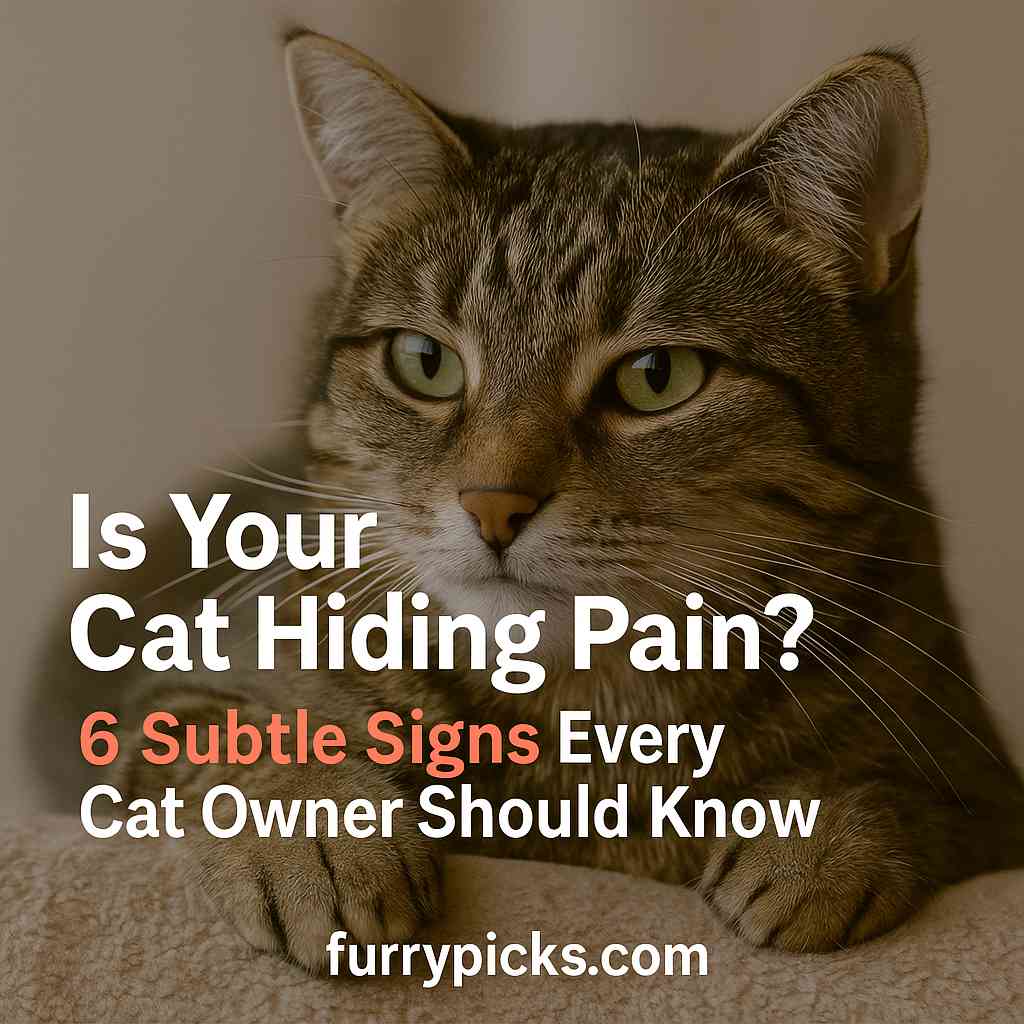Because cats suffer in silence—unless you know what to look for

Introduction:
Cats are mysterious, independent, and—let’s face it—masters of hiding discomfort.
Unlike dogs, they rarely vocalize or show obvious signs of pain. But that doesn’t mean they’re not hurting.
As a cat parent, it’s up to you to notice the quiet clues.
In this guide, we’ll explore 6 subtle yet powerful indicators your cat may be in pain—and what you can do to support them gently and effectively.
🛏️ 1. Changes in Sleeping Habits
More sleep than usual? Less? Sudden changes in favorite resting spots?
Cats in pain may hide, sleep in new positions, or seem restless at night.
What to try:
- Provide warm, orthopedic bedding
- Offer quiet, elevated safe spaces
- Monitor consistency day-to-day
🧼 2. Reduced Grooming or Over-Grooming
Pain can lead to grooming less—or obsessively licking one area (often the stomach, joints, or base of the tail).
Watch for:
- Greasy or unkempt coat
- Bald patches from over-licking
- Avoidance of touch during brushing
Helpful tools:
- Soft grooming brushes
- Skin-soothing sprays
- Supplements for coat health
🐾 3. Avoiding the Litter Box
If your cat suddenly avoids the litter box, don’t assume they’re being “naughty.”
Pain (especially arthritis or bladder discomfort) may make stepping in, squatting, or scratching uncomfortable.
What helps:
- Litter boxes with low entry
- Unscented, soft-texture litter
- Regular vet checkups for urinary health
🐈⬛ 4. Withdrawal or Hiding
A once-social cat that suddenly hides in closets, under beds, or behind furniture might be trying to cope with pain quietly.
Tip:
Respect their space, but observe from a distance.
Soft lighting, low noise, and calming pheromones can help.
🍽️ 5. Changes in Eating or Drinking Habits
Painful teeth, nausea, or joint stiffness can make reaching food difficult.
Look for:
- Slow chewing or eating only on one side
- Drooling or food refusal
- Weight loss without diet change
Solutions:
- Try shallow or elevated bowls
- Offer soft food or warmed meals
- Use flavor-enhanced supplements to entice appetite
🐾 6. Unusual Aggression or Sensitivity
Pain often shows up as irritability. If your cat hisses, swats, or flinches when touched—it may be time to check for a physical cause.
Tools for support:
- Calming diffusers (Feliway)
- Gentle handling aids
- Joint support supplements or CBD drops (vet-approved)
❤️ Final Thoughts
Pain doesn’t have to be loud to be real.
Cats trust you to read between the lines—through posture, habits, and mood.
When you respond with care, comfort, and the right tools, you give them a better quality of life.
🛒 Looking for supportive solutions? Visit our Cat Health & Wellness Collection to explore gentle products for comfort and relief.
Because even the quietest meow deserves to be heard.